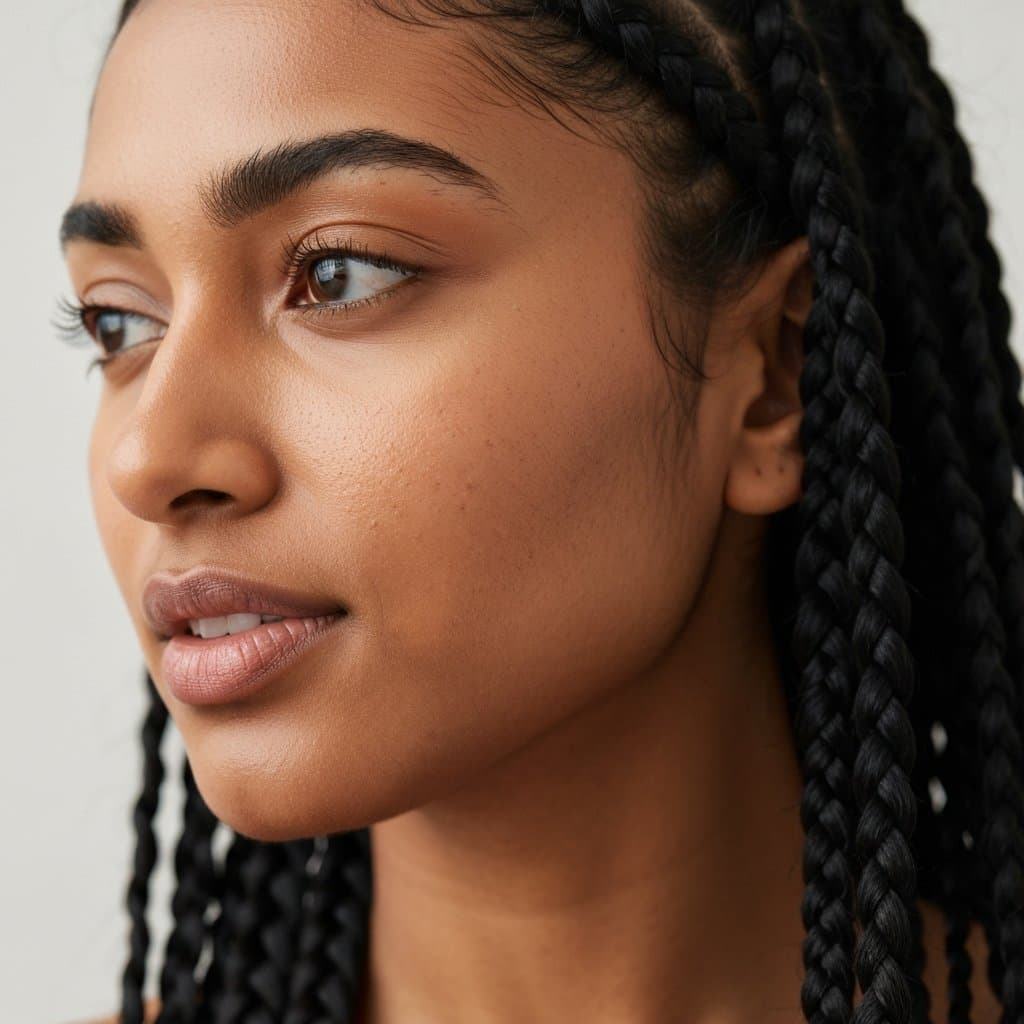Pain-Free Perfection: Your Ultimate Guide to Knotless Braids | Get & Maintain
Introduction: The Dawn of a Pain-Free Era
For decades, protective styling has been synonymous with a certain level of discomfort. The age-old adage "beauty is pain" was often the silent mantra during long braiding sessions, resulting in tension headaches and a tender scalp. But what if you could have the stunning, long-lasting beauty of braids without the initial pain? Enter the revolutionary technique that has taken the hair community by storm: knotless braids. This innovative method offers the same gorgeous aesthetic as traditional box braids but eliminates the primary source of tension, paving the way for a truly comfortable and scalp-friendly protective style. This is your definitive guide to achieving and maintaining pain-free perfection with knotless braids.
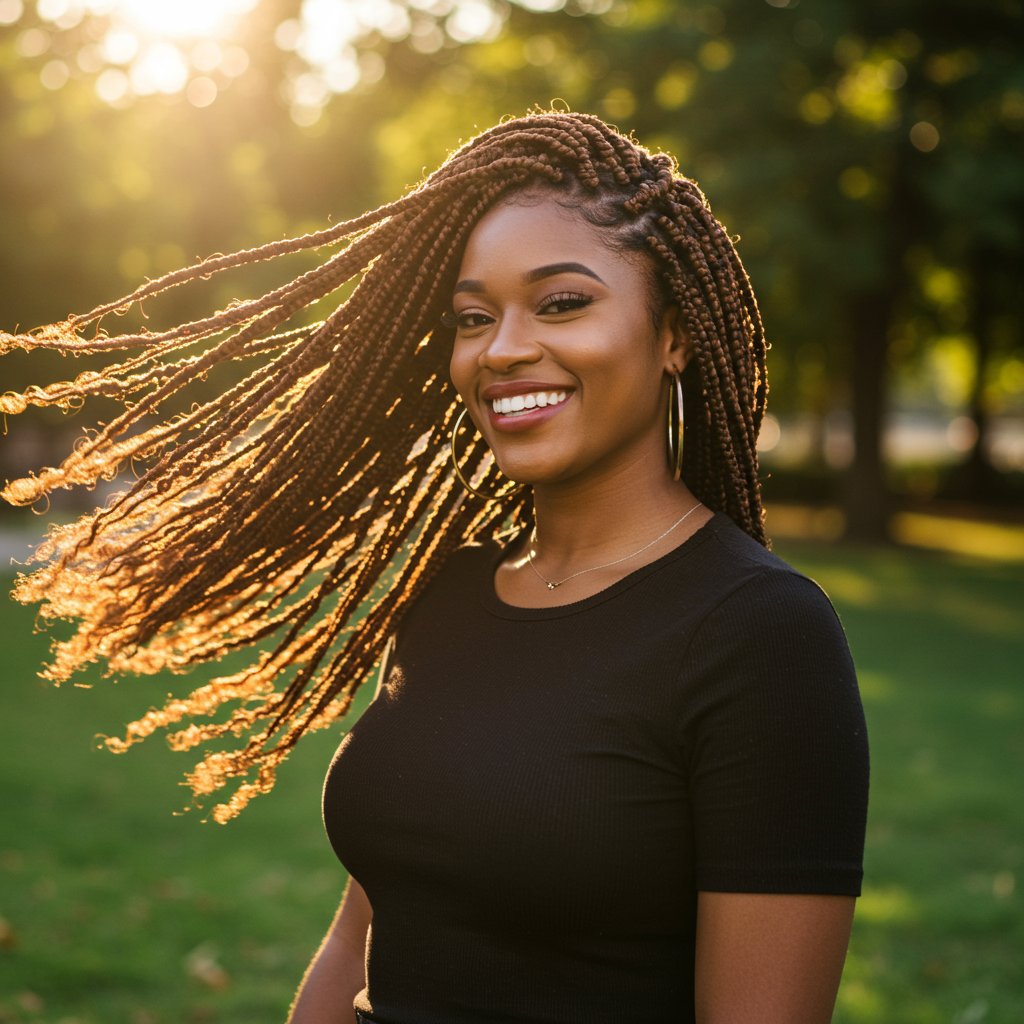
Unlike their predecessors, knotless braids begin with your natural hair and gradually feed in braiding hair as the plait continues down the shaft. This feed-in method removes the tight, tension-inducing knot that sits directly on the scalp in traditional box braids. The result is a flatter, more natural-looking braid that lays flush against the head, offering immediate flexibility and significantly reducing the risk of traction alopecia. Whether you're a seasoned braid enthusiast or a newcomer to protective styling, understanding the nuances of getting and caring for knotless braids is the key to unlocking a beautiful, healthy, and long-lasting look that champions the health of your hair and scalp above all else.
---
What Exactly Are Knotless Braids? The Tension-Free Revolution
To truly appreciate knotless braids, it's essential to understand how they differ from the classic box braids we've known for years. The fundamental difference lies in the first few centimeters of the braid. Traditional box braids start by creating a small knot at the base of the parted section, where the braiding hair is looped around the natural hair and pulled tight against the scalp. This initial knot is the main culprit behind the tension, soreness, and limited movement experienced in the first few days of a new style.
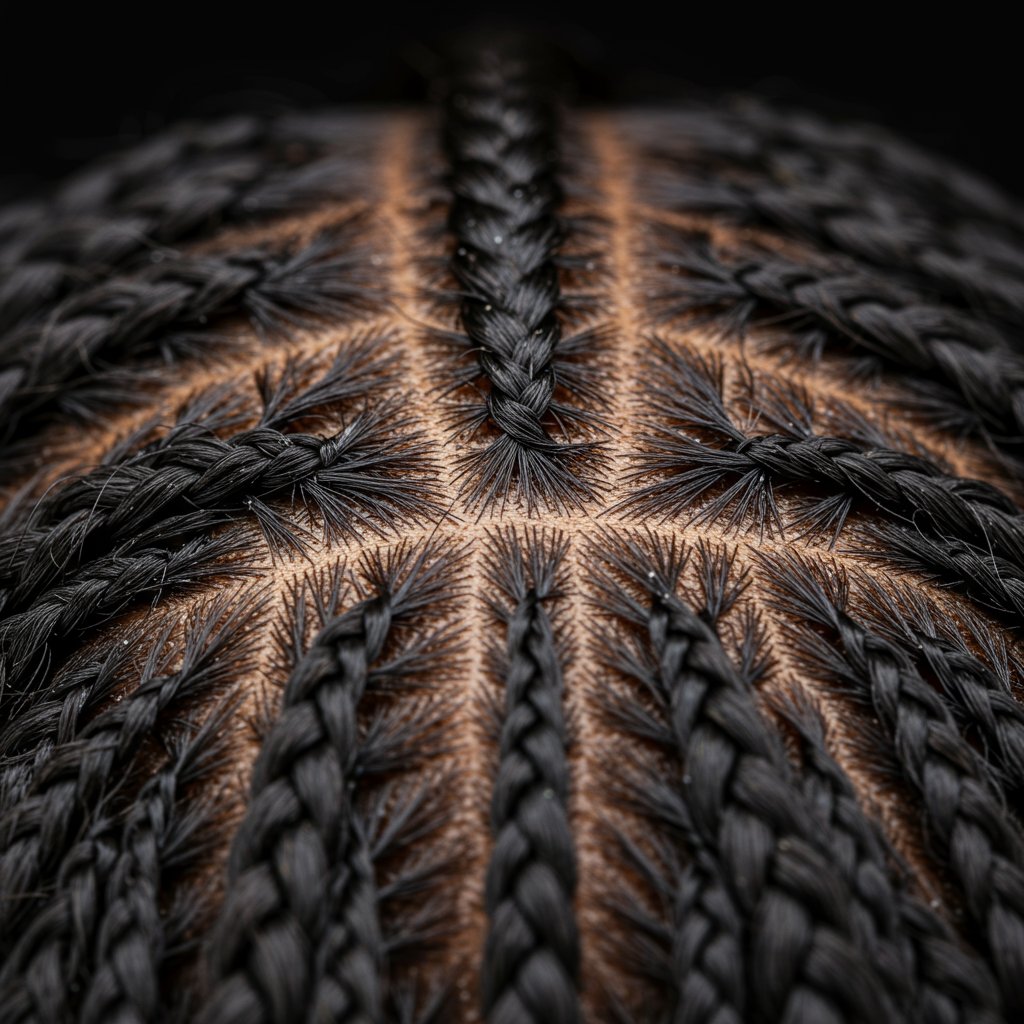
Knotless braids, on the other hand, completely eliminate this step. The stylist begins by braiding your natural hair for a short distance before incrementally feeding in small pieces of braiding hair. This “feed-in” technique creates a seamless transition from your natural hair to the extension, resulting in a braid that is smooth and flat at the root. This method not only avoids the painful tension but also places significantly less stress on your hair follicles. The final look is sleek, natural, and offers unparalleled comfort from the very first moment.
This structural difference has profound implications for scalp health. The constant, high tension from traditional knots can lead to inflammation of the hair follicles, a condition known as folliculitis, and in more severe cases, traction alopecia—a form of hair loss caused by prolonged pulling. By distributing the weight of the extension evenly down the hair shaft rather than concentrating it at the root, knotless braids serve as a much safer, healthier long-term protective styling option.
---
The Unbeatable Benefits: Why Everyone is Choosing Knotless
The soaring popularity of knotless braids isn't just a fleeting trend; it's a direct response to the tangible benefits they offer. Wearers are consistently choosing this method for a combination of comfort, health, and aesthetic appeal that is difficult to match.
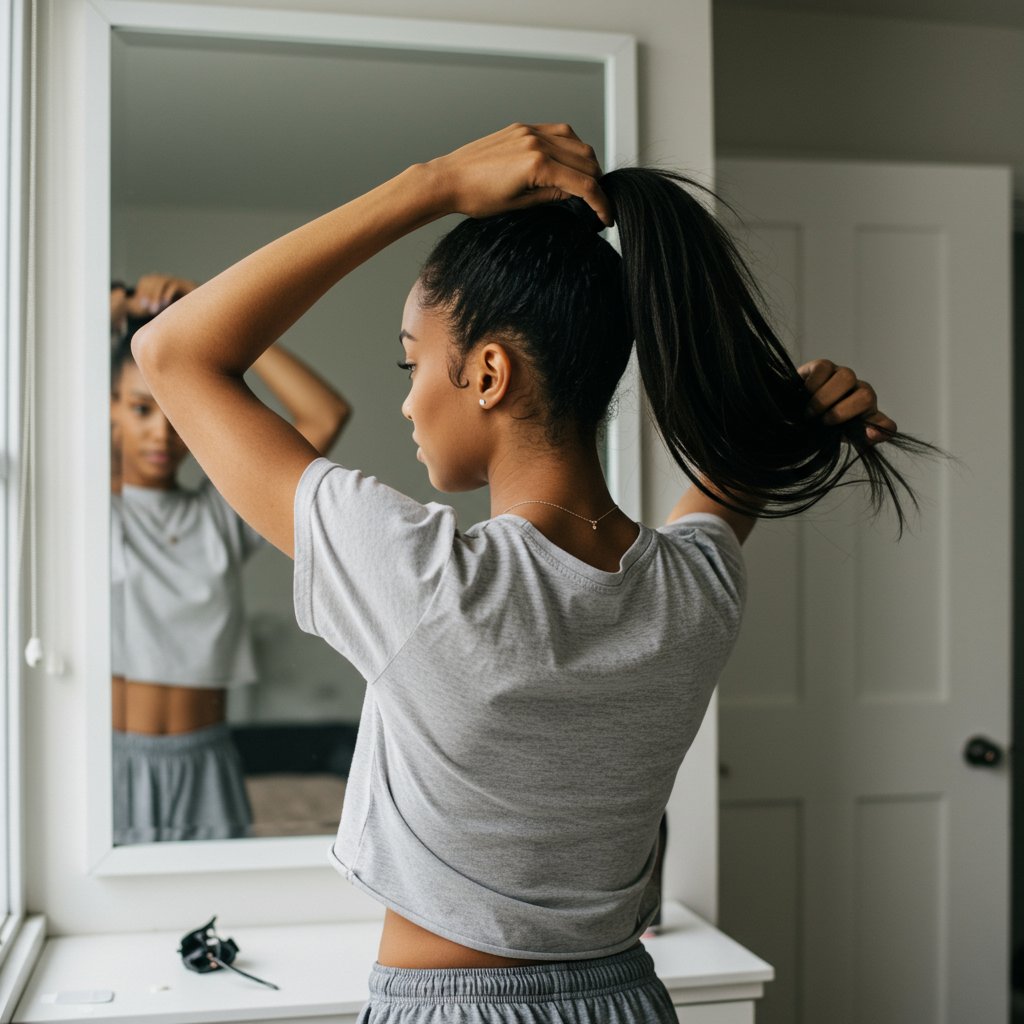
Key Advantages of Knotless Braids:
- Pain-Free & Gentle on the Scalp: This is the number one benefit. The absence of a knot at the base means no pulling, no tension headaches, and no tender scalp. It's a truly comfortable experience from day one.
- Promotes Hair & Scalp Health: By minimizing stress on the hair follicles, knotless braids significantly reduce the risk of breakage and traction alopecia. This makes them an excellent choice for those looking to protect their hair while promoting growth.
- Immediate Flexibility & Versatility: Forget the stiff, immovable braids of the past. Knotless braids can be styled in a high ponytail or bun immediately after installation without causing pain or discomfort. Their lightweight and flexible nature allows for endless styling possibilities right away.
- Lightweight Feel: The gradual feed-in method means the braids are generally lighter than traditional box braids of the same size and length. This reduces the overall weight pulling on your head, enhancing comfort for long-term wear.
- A More Natural Appearance: Because they start with your own hair, knotless braids offer a flatter, more seamless look at the root. They appear to be growing directly from the scalp, providing a sleek and incredibly natural finish that many people prefer.
These combined benefits create a protective style that doesn't force you to compromise. You get the length, volume, and low-maintenance lifestyle of braids without sacrificing the health of your scalp or your immediate comfort. It's a win-win that has solidified knotless braids as a top-tier choice in the world of hairstyling.
---
Prepping for Perfection: How to Prepare Your Hair for Knotless Braids
The foundation of a flawless and long-lasting set of knotless braids is laid long before you sit in the stylist's chair. Proper preparation of your natural hair is non-negotiable. Arriving at your appointment with clean, moisturized, and detangled hair not only makes the installation process smoother and faster but also ensures your hair is in its healthiest state to be tucked away.
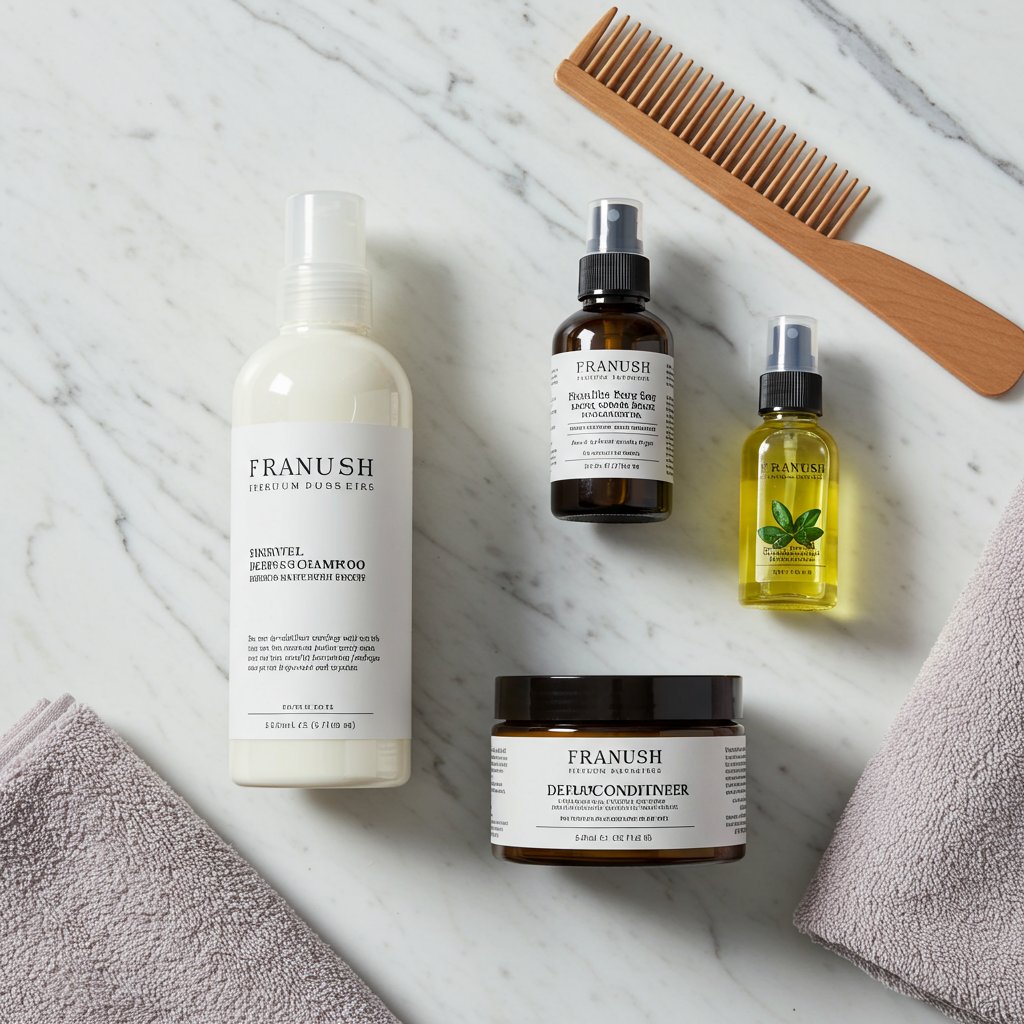
Your Pre-Appointment Hair Care Checklist:
- Thorough Cleansing: Start with a high-quality clarifying shampoo to remove any product buildup, dirt, or oil from your hair and scalp. A clean canvas is crucial for a healthy scalp environment underneath the braids. Follow up with a moisturizing shampoo to replenish hydration.
- Deep Conditioning: This step is vital. After cleansing, apply a rich, deep conditioner or hair mask. Focus on products with ingredients like shea butter, argan oil, or glycerin. For an extra boost, use a hooded dryer or steamer for 20-30 minutes to help the conditioner penetrate the hair shaft deeply. This infuses your hair with moisture, which is essential for preventing dryness and breakage while it's braided.
- Moisturize & Seal: Once you've rinsed out the deep conditioner, apply a leave-in conditioner to damp hair. This adds another layer of moisture and helps with detangling. Follow up with a natural oil (like jojoba, grapeseed, or avocado oil) or a cream-based sealant to lock that moisture in. This is often done using the L.C.O. (Liquid/Leave-in, Cream, Oil) or L.O.C. method.
- Thorough Detangling & Stretching: This is perhaps the most critical preparation step. Carefully detangle your hair, working from the ends up to the roots with a wide-tooth comb or your fingers. Once detangled, it's highly recommended to stretch your hair. This can be done via blow-drying on a low to medium heat setting, or through heatless methods like banding or African threading. Stretched hair is much easier for the stylist to part and braid, ensuring neat, uniform plaits and preventing breakage during the installation.
Investing time in this prep routine will pay dividends. It ensures your hair is fortified and hydrated, minimizing the risk of damage and setting you up for a beautiful, long-lasting style. A professional stylist will always appreciate a client who arrives with well-prepared hair.
---
The Installation Process: A Step-by-Step Look at a Pain-Free Experience
Understanding what happens during a knotless braid installation can help you feel more comfortable and ensure you know what to look for in a quality service. A professional and experienced stylist will prioritize the health of your hair and your comfort throughout the entire process.
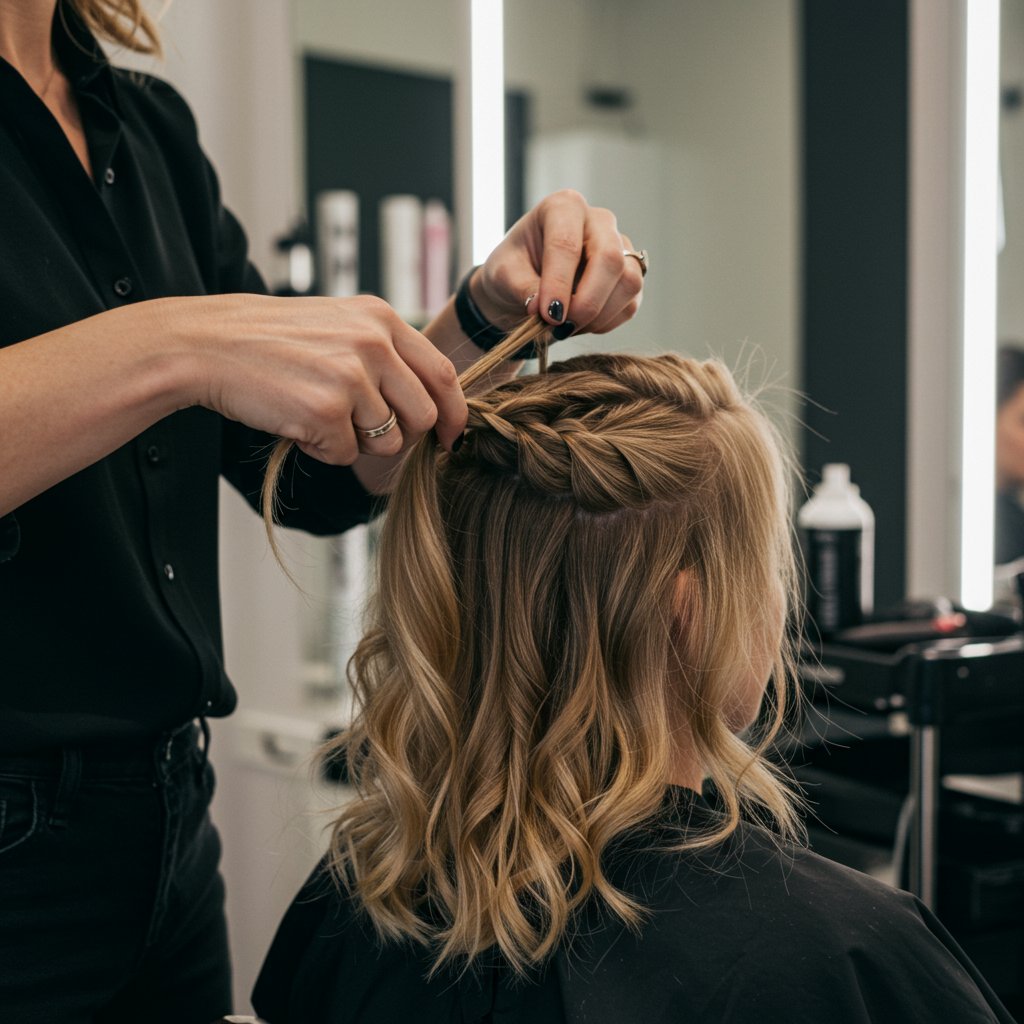
What to Expect at the Salon:
- Consultation: The appointment should begin with a brief consultation. You'll discuss the desired size (small, medium, jumbo), length, and color of your braids. The stylist will also assess the condition of your hair and scalp to ensure it's healthy enough for the style.
- Parting: Precision is key. The stylist will begin creating a system of clean, crisp parts. The pattern (box, triangle, or free-form) determines the final look. A good stylist uses a rat-tail comb and sometimes a light gel or edge control for immaculate parting.
- The Feed-In Technique: This is where the magic happens. For each section, the stylist will start braiding with just your natural hair. After a few passes, they will begin seamlessly adding small pieces of pre-stretched braiding hair. They will continue to add hair incrementally until the desired thickness is achieved. This is done with smooth, consistent tension—enough to create a neat braid, but never enough to cause pain or pull on the scalp.
- Braiding Down: The stylist will continue braiding down the length of the hair, maintaining consistent tension and ensuring the braid is smooth and uniform from root to tip.
- Sealing the Ends: Once the desired length is reached, the ends need to be sealed to prevent unraveling. The most common method is dipping the ends in hot water, which smooths the synthetic fibers and secures them. Other options include burning the ends (a method that should only be done by a very experienced professional) or using small rubber bands for certain styles.
Throughout the process, which can take anywhere from 4 to 9 hours depending on size and length, there should be open communication. You should never feel pain. If a braid feels too tight, speak up immediately. A professional stylist will understand and adjust their technique accordingly.
---
Mastering Maintenance: Your Daily and Weekly Knotless Braid Care Routine
Your braids are installed and look incredible. Now, the focus shifts to maintenance to keep them looking fresh and to ensure your natural hair remains healthy underneath. A consistent care routine is the key to longevity and scalp health.
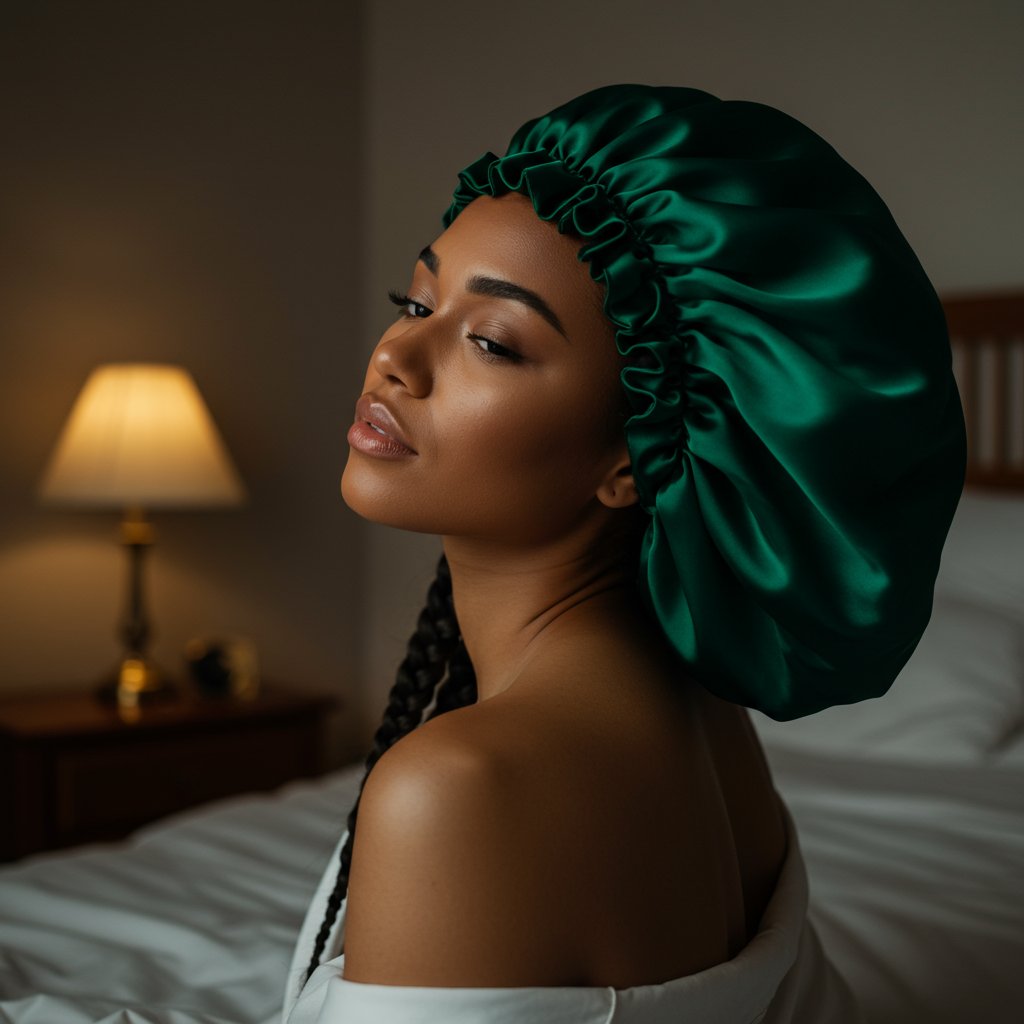
Daily Care:
- Nightly Protection: This is non-negotiable. Every night, protect your braids by wearing a large satin or silk bonnet, scarf, or by sleeping on a silk/satin pillowcase. This reduces friction, which prevents frizz, flyaways, and moisture loss. Tying your braids up into a loose high bun before covering them can also help preserve their neatness.
- Moisturize Your Scalp: Your scalp can become dry under braids. Lightly spritz your scalp every 2-3 days with a water-based leave-in conditioner or a braid spray. Follow up by massaging a few drops of a lightweight oil (like jojoba, almond, or grapeseed oil) onto your scalp to seal in the moisture and soothe any potential dryness. Avoid heavy greases or butters that can cause buildup.
Weekly Care:
- Cleansing the Scalp: Buildup of sweat, oil, and products can lead to itching and irritation. Once every 1-2 weeks, cleanse your scalp. You can do this by diluting shampoo with water in a nozzle-tip applicator bottle. Apply the mixture directly to your scalp, gently massage with the pads of your fingers (not your nails), and rinse thoroughly while letting the water run down the length of your braids. Focus the cleansing on the scalp, not the braids themselves.
- Refreshing the Braids: After washing, you can refresh the braids themselves. Smooth a light, frizz-control mousse down the length of the braids to tame any flyaways and restore their sleek appearance. Allow your braids to air dry completely to prevent mildew or unpleasant odors. Never tie up wet braids.
This simple but consistent routine will keep your scalp healthy, your natural hair moisturized, and your knotless braids looking salon-fresh for weeks.
---
Pro Tips for Flawless Knotless Braids
Ready to take your knotless braid game to the next level? Here are some expert tips to ensure your style remains flawless from installation to takedown.
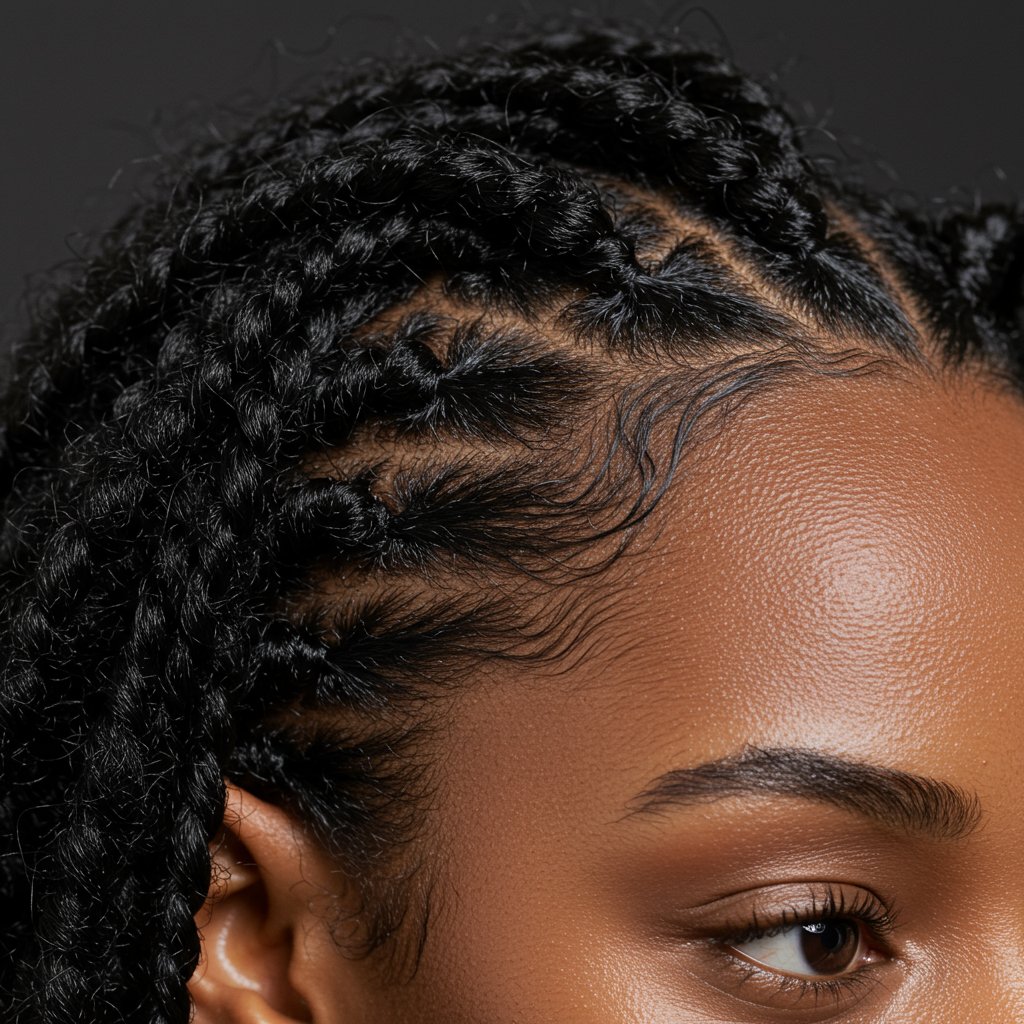
- Choose Pre-Stretched Hair: Always opt for pre-stretched or pre-feathered braiding hair. This hair tapers at the ends, saving the stylist time and resulting in a more natural, less bulky finish.
- Don't Go Too Small: While micro braids can be beautiful, extremely small knotless braids can put unnecessary strain on fine hair strands. Opt for a size that is appropriate for your hair density to avoid potential breakage.
- Refresh Your Edges: To extend the life of your style and keep it looking neat, you can have a stylist refresh the braids along your hairline (the first two rows) after about 4-5 weeks.
- Listen to Your Scalp: If you experience persistent itching, it could be a reaction to the synthetic hair or product buildup. An apple cider vinegar rinse (diluted with water) on the scalp before rinsing with plain water can help alleviate this.
- Know When to Say Goodbye: The golden rule for protective styles is to not leave them in for too long. The ideal wear time for knotless braids is 4 to 7 weeks. Keeping them in longer can lead to matting, tangling, and buildup at the root, which can cause significant breakage during the takedown process.
---
Frequently Asked Questions About Knotless Braids
1. How long do knotless braids typically last?
With proper care and maintenance, knotless braids can last between 4 to 7 weeks. It's generally not recommended to wear them for longer than 8 weeks to prevent matting of the new growth and potential hair damage.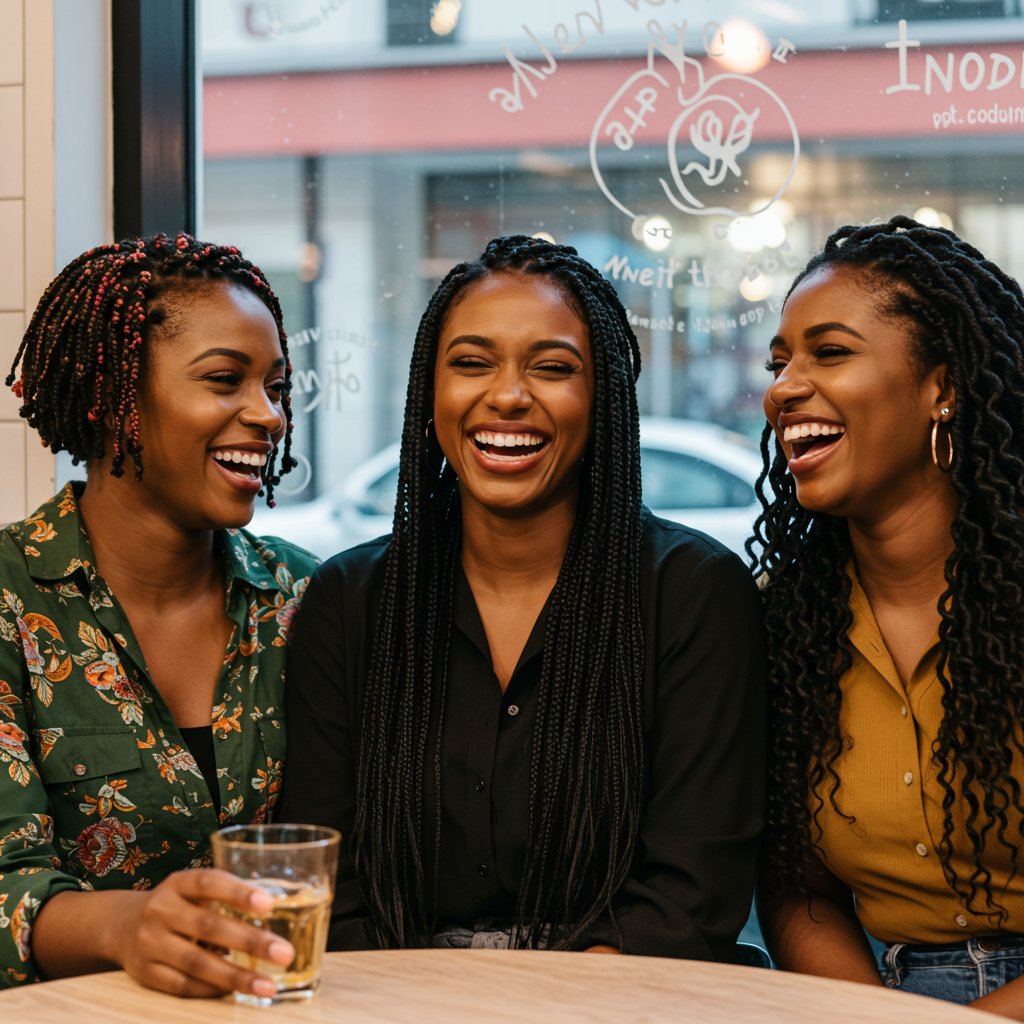
2. Can I get knotless braids if I have short hair?
Yes, you can, but your hair should be at least 2-3 inches long for the braid to have enough natural hair to grip securely. For shorter hair, it's crucial to seek an experienced stylist who specializes in gripping short hair to avoid slippage and ensure a neat finish.3. What kind of hair is best for knotless braids?
High-quality, pre-stretched synthetic Kanekalon hair is the most popular and recommended choice. Brands like X-Pression or Spectra are favorites among braiders for their lightweight feel and smooth texture that is gentle on the hands and hair.4. How do I stop my scalp from itching?
Itching is common and can be caused by dryness, product buildup, or a sensitivity to the braiding hair. To soothe it, use a light anti-itch braid spray or apply a small amount of tea tree oil or peppermint oil diluted with a carrier oil directly to the scalp. Regular, gentle scalp cleansing will also help prevent itch-inducing buildup.5. Are knotless braids less damaging than other braid styles?
Yes, when installed and maintained correctly, knotless braids are considered one of the least damaging protective braid styles. Because they eliminate the high-tension knot at the base and distribute weight more evenly, they place far less stress on the hair follicles, significantly reducing the risk of traction alopecia.6. How much do knotless braids usually cost?
Cost varies widely based on your location, the stylist's experience, and the desired size and length of the braids. Generally, knotless braids are more expensive than traditional box braids because the technique is more intricate and time-consuming. You can expect to pay anywhere from $175 to $600+ for a professional installation.---
Conclusion: Embrace the Comfort and Beauty
Knotless braids represent a significant evolution in the world of protective styling, proving that beauty does not have to be synonymous with pain. By prioritizing the health of the scalp and hair follicles, this technique offers a comfortable, versatile, and stunningly natural alternative to traditional methods. From the crucial preparation phase to diligent aftercare, every step is an opportunity to nurture your natural hair while enjoying a beautiful, long-lasting style.
By following this comprehensive guide, you are now equipped with the knowledge to not only ask for exactly what you want but also to maintain your style with confidence. Remember that the key to a truly perfect set of knotless braids lies in the hands of a skilled professional who understands the art of tension-free styling. Invest in proper installation and commit to a healthy maintenance routine, and you'll enjoy the pain-free perfection that makes knotless braids a beloved choice for so many.

